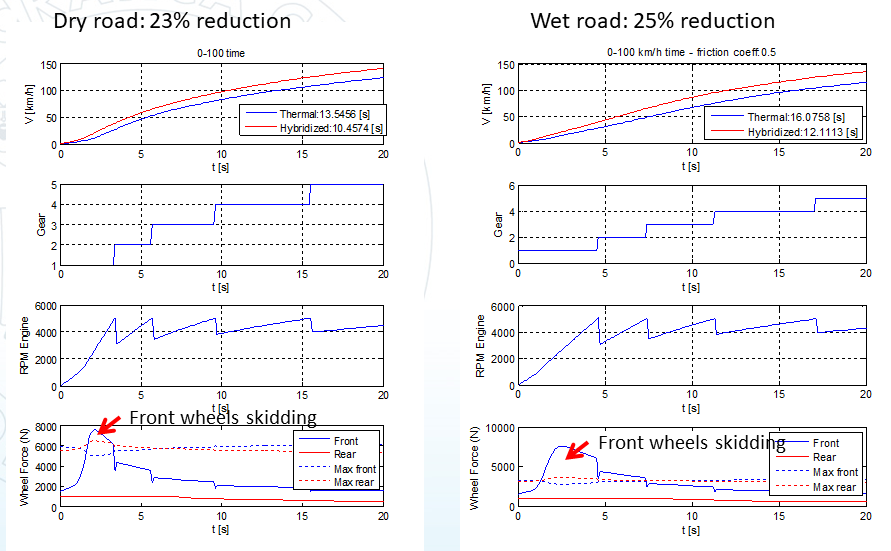The project
HySolarKit is a technology that allows traditional cars to be converted into hybrid-electric vehicles
HySolarKit: how it works
Electric engines
In the rear wheels are integrated two electric motors (Hybrid Electric Retrofit System, “HERS”) that turn the car into a 4×4 hybrid drive (conventional traction on the front wheels and electric on the rear wheels).
Batteries
The electric motors are powered by an additional lithium battery mounted in the boot. The battery can be recharged from the solar panels, from the vehicle itself (during braking or descent, or by absorbing the additional torque generated by the engine in order to optimize the overall efficiency) or from the electrical network (plug-in option).
Flexible solar panels
High performance flexible solar panels (produced by Solbian, partner of the LIFE-SAVE project), are mounted on the roof and on the car bonnet with the function of recharging the vehicle battery, both in the driving phases and during the phases of parking, for free without CO2 emissions.
The control system
A control system, connected to a display, drives the electric motors on the basis of the driver’s requests and the battery charge status, connecting to the vehicle through the OBD port, normally used for diagnostics and without interfering with the control unit original vehicle.
The system is designed to be installed on all front-wheel-drive vehicles with two driven wheels.

The advantages
The main advantages of using HySolarKit are many:
- the internal combustion engine works less because part of the power required for traction is supplied by electric motors. This translates into lower fuel consumption and lower emissions of polluting gases. The benefit can reach 20-25% for a typical use in urban areas (one hour driving per day) and on sunny days, but it is still appreciable even in the absence of the sun, for the benefits related to hybridization (recovery of the braking energy and descents, optimization of the efficiency of the thermal engine)
- the car, now similar to a hybrid in terms of consumption and emissions, will have access to limited traffic zones (ZTL), where it will be able to move in mainly electric mode
- unlike what happens for an electric car, the car has no problems of recharging and autonomy, which indeed is also increased compared to the traditional starting vehicle for the presence of additional battery
- compared to the starting car, the car will have better performance, thanks to four-wheel drive. In particular, the presence of two electric motors in the rear wheels, gives better capacities during acceleration which result in a reduction of more than 20% of the time to go from 0 to 100km / h


